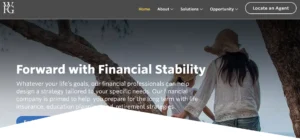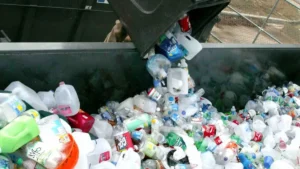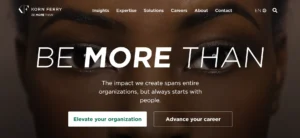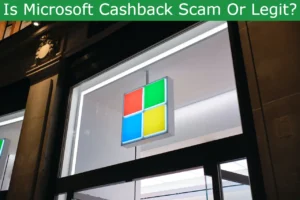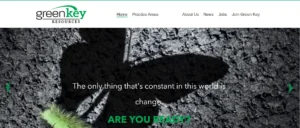Have you ever heard of a big court case where people felt tricked by a settlement? That’s what happened in the Fitzgerald v Wildcat case. It’s a story about loans, big promises, and a lot of people feeling like they didn’t get a fair deal. But don’t worry! We’re going to break it down step by step so you can understand what happened and why it matters.
In this post, we’ll explain the Fitzgerald v Wildcat settlement, who was involved, and why some people think it was a scam. You’ll learn about the loans, the court case, and what the settlement means for everyone. By the end, you’ll know all the important details and even get answers to some common questions. Let’s dive in!
Key Takeaways
Here are the most important things you need to know about the Fitzgerald v Wildcat settlement:
- The case is about loans with very high interest rates. Some people borrowed money from companies owned by a Native American tribe, but the interest rates were way higher than what’s allowed in many states.
- The settlement cancels $1.4 billion in debt. That’s a huge amount of money that borrowers no longer have to pay back.
- Borrowers might also get some money back. There’s a $37.35 million fund to give cash payments to people who paid too much on their loans.
- Not everyone gets the same benefits. Depending on where you live and how much you paid, you might get different amounts or even nothing at all.
- The settlement is still being reviewed by the court. It’s not final yet, so things could change.
- You can choose to be part of the settlement or not. If you don’t want to be included, you have to tell the court by a certain date.
These points give you a quick overview, but there’s a lot more to learn. Keep reading to get the full story!
What is the Fitzgerald v Wildcat Settlement Scam?
The Fitzgerald v Wildcat settlement is a big deal because it involves a lot of people who borrowed money and felt like they were treated unfairly. The case is about loans made by companies owned by a Native American tribe called the Lac du Flambeau Band of Lake Superior Chippewa Indians. These companies gave out loans with very high interest rates, sometimes over 700%! That’s way more than what most states allow.
Some people who took these loans said the companies broke the law by charging too much interest. They also said the companies didn’t have the right licenses to lend money in certain states. So, they took the companies to court. After a long legal battle, the two sides agreed to a settlement. A settlement is when both sides decide to stop fighting and come to an agreement.
In this case, the settlement means that the companies will cancel $1.4 billion in loans that people still owe. That’s like erasing a huge amount of debt! Plus, there’s a $37.35 million fund to give money back to people who already paid too much on their loans. But some people think the settlement isn’t fair. They call it a scam because not everyone gets the same benefits, and some might not get anything at all.
Who are the parties involved in the case?
The Fitzgerald v Wildcat case has two main groups: the borrowers and the lenders. The borrowers are people like Lori Fitzgerald, Aaron Fitzgerald, Kevin Williams, Jade Singleton, and Angela Maville. They took out loans from the tribal lending companies and felt like they were charged too much interest. They started the lawsuit to get their money back and to stop the companies from doing this to others.
The lenders are companies owned by the Lac du Flambeau tribe. These companies have names like Lendgreen, Brightstar Cash, and Sky Trail Cash. The tribe says these companies are part of their business to help the community, but the borrowers say the companies broke the law. There are also some individuals involved, like Joseph Wildcat, Sr., who is the president of the tribe, and other tribal officials. The borrowers say these people helped run the lending companies.
In the end, the court had to figure out who was right. But instead of going to trial, both sides agreed to the settlement.
What led to the legal dispute?
The legal dispute started because of the high interest rates on the loans. In many states, there are laws that say how much interest lenders can charge. For example, in Virginia, the legal limit is 12% per year. But the tribal lending companies were charging much more, sometimes hundreds of percent!
The borrowers said this was against the law. They also said the companies didn’t have the proper licenses to lend money in their states. Plus, they claimed the companies used the tribe’s name to avoid following state laws. This is sometimes called rent-a-tribe, where a company partners with a tribe to try to get around the rules.
The tribal officials and companies said they didn’t do anything wrong. They argued that because the companies are owned by the tribe, they don’t have to follow state laws. They also said the loans were made on tribal land, so tribal law applies. This disagreement led to a big court case where both sides presented their arguments.
What are the allegations of fraud or misconduct?
The borrowers made some serious claims against the tribal lending companies. First, they said the companies charged illegal interest rates that were way higher than what’s allowed in their states. Second, they said the companies operated without licenses in many states where lenders need permission to give out loans.
Third, some borrowers said the companies didn’t explain clearly how much the loans would cost or how the interest worked. This made people feel tricked. Finally, the borrowers accused the companies of using the tribe’s name to avoid state laws, which they said was unfair.
The tribal officials and companies said these claims weren’t true. They said everything they did was legal and that the borrowers agreed to the terms when they took out the loans. The court had to look at all the evidence to decide who was right. But before that happened, the two sides agreed to settle the case.
How did the settlement come about?
The settlement happened after years of legal fighting. The case started in 2020, and both sides spent a lot of time and money arguing in court. Eventually, they decided it would be better to come to an agreement instead of letting a judge or jury decide.
In a settlement, both sides give up something to end the dispute. Here, the tribal lending companies agreed to cancel $1.4 billion in loans and pay $37.35 million to the borrowers. In return, the borrowers agreed to drop the lawsuit and not sue the companies again for the same reasons.
The settlement was approved by the court, but it’s still being reviewed to make sure it’s fair. Some people think it’s a good deal because it helps a lot of borrowers. Others think it’s not enough because the companies might not have to change how they do business.
What are the terms of the settlement?
The settlement has several important parts. First, any loan from the tribal lending companies that still has a balance will be canceled. That means borrowers don’t have to pay back the remaining amount, which adds up to about $1.4 billion. Second, there’s a $37.35 million fund to give money back to borrowers who paid more than they should have.
Third, the tribal officials agreed to ask credit reporting agencies to remove any negative marks related to these loans. Fourth, the companies promised not to sell or share borrowers’ personal information for business purposes. But not everyone will get the same benefits. Some borrowers might only get their debt canceled, while others might get cash payments. It depends on where they live and how much they paid.
What are the potential consequences for the parties involved?
For the borrowers, the settlement could mean getting rid of debt and maybe even getting some money back. That’s a big relief for people who were struggling to pay off their loans. It also means they don’t have to worry about the companies asking for more money.
For the tribal lending companies, the settlement means they lose a lot of money and might have to change how they do business. They could face stricter rules in the future and more lawsuits if they don’t follow the law. For the tribe, this case might hurt their reputation. Some people might not trust their businesses anymore, but it could also be a chance to make things better.
The settlement has both good and bad effects for everyone involved.
How does this case impact the legal or financial landscape?
The Fitzgerald v Wildcat case shows how tricky it can be when tribal businesses work in different states. Tribes have their own laws, but states have their own rules too. This case makes it clear that we need better rules about how tribal businesses should act outside their land.
For borrowers, this case reminds them to be careful when taking out loans, especially online. It’s smart to read everything and check if the lender follows the law. For lenders, it shows they can’t use tribal status to ignore state laws. If they break the rules, they could lose a lot of money.
This case might lead to new rules for tribal lending companies and how states handle them.
What lessons can be learned from this case?
The Fitzgerald v Wildcat case teaches us some big lessons. First, always check the interest rate before taking out a loan. Make sure it’s not higher than what your state allows. Second, research the lender. Look online for reviews or complaints about the company.
Third, understand the loan terms before you sign anything. Know exactly how much you’ll pay back and when. Fourth, know your rights. If you think a lender is breaking the law, you can talk to a lawyer or tell your state’s attorney general. These steps can help you stay safe from bad loans.
What are the next steps in the legal process?
The settlement isn’t final yet. The court still has to approve it to make sure it’s fair for everyone. There will be a hearing where people can share what they think about the settlement. If the court says yes, the settlement will start, and borrowers will get their benefits.
If the court says no, the case could go back to trial. A judge or jury would decide who wins. But that probably won’t happen because both sides want to avoid a long trial. For now, borrowers should wait for more information. They might get a notice in the mail or by email telling them what to do next.
How can individuals protect themselves from similar scams?
To stay safe from scams like this, follow these tips. First, watch out for loans with very high interest rates. If it sounds too good to be true, it might be a scam. Second, check if the lender is licensed in your state. You can look this up on your state’s website.
Third, read reviews and research the lender online. See what other people say about them. Fourth, don’t give out personal information unless you know the lender is real. Scammers often ask for things like your Social Security number. Fifth, ask for help if you’re not sure. Talk to a trusted adult or a lawyer before signing anything.
FAQs
What is the Fitzgerald v Wildcat settlement?
The Fitzgerald v Wildcat settlement is an agreement between borrowers and tribal lending companies to end a lawsuit. The borrowers said the companies charged illegal interest rates. The settlement cancels $1.4 billion in debt and gives $37.35 million to borrowers.
Who is eligible for the settlement?
You can get benefits if you took out a loan from the tribal companies between July 24, 2016, and October 1, 2023. These companies include Lendgreen and Brightstar Cash, owned by the Lac du Flambeau tribe.
How much money will I get from the settlement?
It depends on where you live and how much you paid on your loan. Some people might get cash, while others only get their debt canceled. Check the settlement website for more details.
Do I need to do anything to get the benefits?
If you’re in the settlement class, you don’t have to do anything. Benefits will come to you. But if you want to opt out or say no to the settlement, you must tell the court by a certain date.
Is the settlement final?
Not yet. The court still needs to approve it. There will be a hearing to check if it’s fair. If it’s approved, benefits will start. If not, the case might go to trial.

